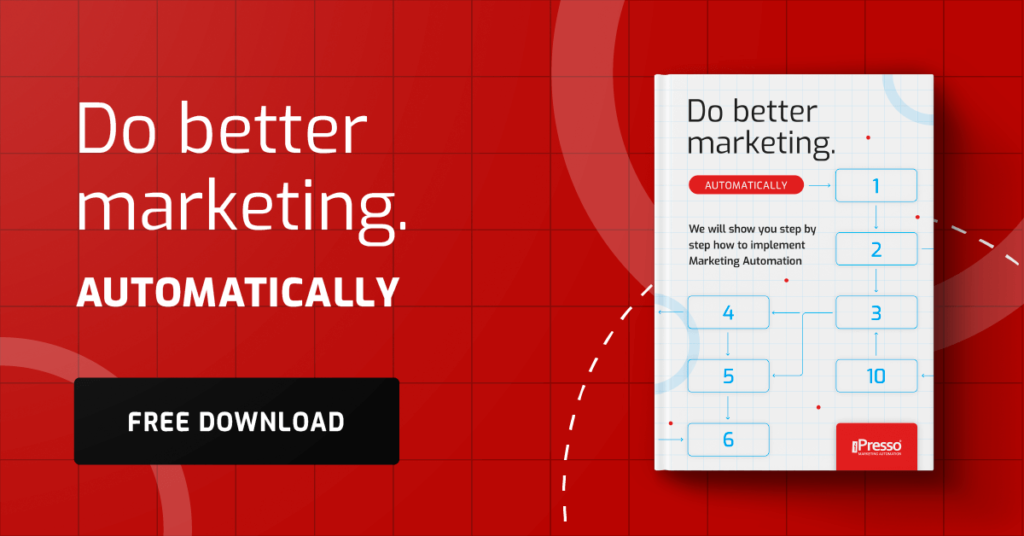Stop being a slave to your tools. Unlock the true power of automation with APIs and create scenarios that others can only dream of

Need solutions that will allow you to combine all your tools into one coherent ecosystem, but don’t know how to do it? APIs and webhooks come to the rescue. With them, you can build custom connections between systems that previously functioned in isolation from each other. See how it works.
API vs. webhooks – who makes the first move?
An API works like a hotel receptionist – it responds when someone approaches and asks a question. Your system sends a request to the API, and the API responds to that request by returning data or performing a specific action. For example, when a contact fills out a form on a website, the system can send a request to the CRM API to retrieve or save data. The API can then return data that you can use, for example, in a marketing automation system to launch a personalized campaign.
A webhook is like a doorbell — it works in real time and triggers automatically when something happens. A webhook contains a message that is sent in real time to a unique application address. An example is automatically sending a thank you for purchases — the data goes to the Marketing Automation system from the online store immediately after the transaction is completed, as one-way communication.
Where to use webhooks and APIs?
- Courier company price list update – the online store sends a request to the courier company’s API to retrieve current costs and delivery times. The store system processes this data and then displays it to the customer in the shopping cart or on the product page.
- Available reservations – the Marketing Automation system uses a webhook to obtain data on which rooms are available on the selected dates, so it only recommends those that can be booked.
- Shipping goods – The payment operator sends a webhook with information to the store immediately after payment confirmation so that the store can ship the goods.
- Payment link – The bank sends a webhook with a link to the payment for the order placed.
- Event participation – A webhook from the event platform informs the Marketing Automation system that a participant has registered for a given event (e.g., a marketing conference), so iPresso immediately sends an SMS with confirmation and details.
Event-driven architecture
Instead of constantly monitoring all systems for changes, respond only to specific events. Webhooks are a key element of this technique. When, for example, a customer’s status changes to “hot lead” in one system, the webhook immediately sends a message that triggers a series of actions, such as sending a personalized email campaign or notifying the salesperson about “hot leads” in the CRM system.
What should you keep in mind before connecting custom tools?
Before implementing advanced automation, proper preparation is key. Identify which tasks you perform manually and where you lose the most time. Consider which data is transferred between systems to determine what can be automated. Check the API documentation, available features, and call limits to ensure that the selected platforms are flexible and meet your requirements. Effective automation requires close collaboration between marketers and developers. Establish clear roles and communication channels so that teams can work together effectively.
Simplify your life with integrations
Integrations are at the heart of any effective automation. Instead of struggling with manual data transfer between, for example, a spreadsheet, CRM, and email marketing tool, integrations allow you to combine these systems into one cohesive ecosystem. This allows you to focus on strategic goals while repetitive, tedious tasks are performed automatically.
Want to see what integrations iPresso offers? Click here.
Summary: Do you already have the automation of the future?
Advanced automation using webhooks and APIs is not just about process optimization. It’s a new way of thinking about marketing. Systems that communicate with each other in real time create personalized customer experiences on an unprecedented scale.
Success in automation depends on a strategic approach, the right tools, and a team ready to take on technical challenges. The first step is to thoroughly analyze your current processes and identify the greatest opportunities for optimization.
Want to leverage the full potential of automation in your business? Fill out the brief and we’ll show you how to create advanced automation scenarios tailored to your industry.



